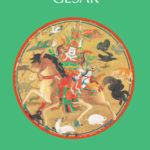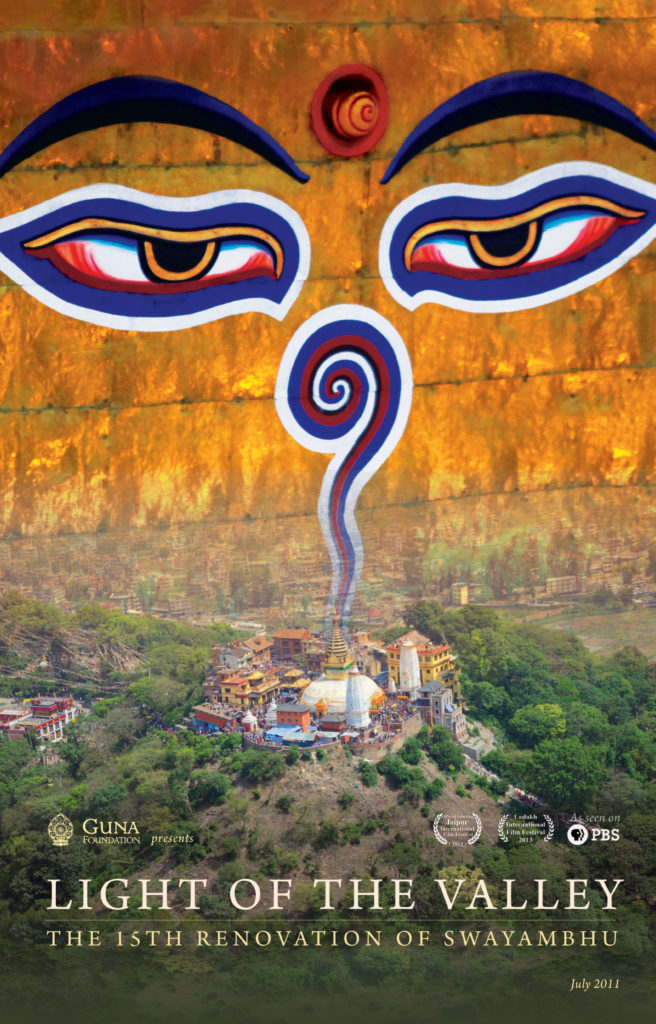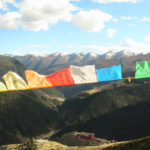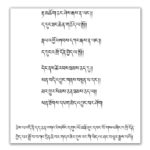
Reports From The Mandala
Head Lama of TNMC

Over the past decade, the Nyingma Mandala of Organizations has expanded dramatically and in unexpected ways. Existing organizations have continued their activities on behalf of the Dharma and all sentient beings, typically intensifying their efforts. At the same time, at least nine new organizations have been formed, adding new dimensions to the founding Head Lama’s vision.
In the reports that follow, we lay out recent developments throughout the mandala and introduce the work of our new organizations. We start with the work of TNMC, where the Head Lama is most directly involved: Yeshe De, Odiyan, the Light Foundations, and the Sarnath Institute. From there we move on to describe the structure and mission of the Nyingma Association of Mandala Organizations (NAMO), founded in 2011.
We go on to lay out the recent work of the organizations that belong to NAMO. As a structure for presenting this wealth of developments, we start with the organizations located in Sonoma County, then turn to developments in Berkeley, and finally report on the expanding efforts of our international centers, under the direction of Nyingma Centers.
Mandala Organizations In Berkeley
Nyingma Mandala of Organizations had its beginning in Berkeley in 1969, when Rinpoche founded the Tibetan Nyingma Meditation Center. In 1971, TNMC moved into its new home, an old fraternity house that Rinpoche named Padma Ling, Land of the Lotus. Padma Ling remains a center of community activity as a residence and place of practice and the site of ongoing art projects and editorial work. Its ample gardens are tended as an offering to the Dharma, and its stalwart bear statue, left behind by the fraternity, has been adopted as a Dharma protector.
The next development came in 1972, when Rinpoche founded the Nyingma Institute in another old fraternity house on the other side of the University campus. Active briefly at Padma Ling, the Institute moved to its present location the next year. We start our reports on the Berkeley mandala organizations with the Institute, which has now flourished as a gateway to the Dharma for more than four decades.
In 2009, the mandala expanded into downtown Berkeley. We had been looking for over a year for a new home for the Tibetan Aid Project, which had occupied the same building as Dharma Publishing and the Yeshe De Project prior to their move to Ratna Ling. In 2008, the opportunity arose to purchase two adjoining buildings in the heart of Berkeley. Although far grander in scale than what we had been looking for, the new buildings offered remarkable opportunities to develop new petals of the mandala. Renovated in secret for nine months as a surprise for the larger community, the buildings witnessed opening celebrations in the summer of 2009.
Mangalam Centers, a 26,000 square foot building next to the main Berkeley post office, built in 1913 and a Berkeley landmark, became the home of the Mangalam Research Center for Buddhist Languages; it also houses a grand temple, office and residential space, and common facilities for dining, community events, and instruction. In addition, it serves as the headquarters for Light of Buddhadharma Foundation, the Center for Creative Inquiry, and NAMO. The smaller building next door became the home for the Tibetan Aid Project, the Dharma Publishing Bookstore, Nyingma Trust, a work space for the Prayer Flag Project, and (initially), the Guna Foundation. In 2010, another opportunity arose—this time to purchase the large building next to the Tibetan Aid Project Building. Known as Armstrong College (later, Armstrong University), it was over eighty years old, also a Berkeley landmark and built by the architect responsible for Mangalam Centers. Because it had been designed for use as a business college, it was perfectly suited for expanding the educational dimension of the mandala. Rinpoche named it Dharma College. After extensive renovation, Dharma College celebrated its opening in 2011. Soon after, it became the new home of the Guna Foundation, which moved from next door. It features a vast public space that Rinpoche lovingly prepared as temple capable of seating hundreds, as well dining facilities and a large lower level that is currently used mostly for storage.
Mandala Organizations In Berkeley
Guna Foundation
Guna Foundation’s mission is to make the world more aware of the many projects of the Tibetan Nyingma Meditation Center, and in the process, present a window into the beauty, spirit, and knowledge of Tibetan Buddhism. Guna Foundation’s work supports the preservation of this wisdom tradition, so that it may become the heritage of all humanity.
Guna accomplishes its mission by developing and marketing high-quality documentary film projects that communicate the richness of the Tibetan Buddhist world and the value of TNMC’s work to a wide audience. Since our founding in 2009, we have established a reputation for appealing and intelligent work, starting with Light of the Valley. Last July 4th, we presented a new documentary about the history and impact of the World Peace Ceremony in Bodh Gaya, called Prayers of the Ancient Ones.
In September of 2013, we held the premiere of Prayers at the Berkeley Brower Center, followed by an exclusive fund raising screening at Pier 24 in San Francisco. We also screened Light of the Valley at Los Angeles County Museum of Art, where it was warmly received by a knowledgeable audience of filmmakers.
During the year, we completed a DVD Prayers of the Ancient Ones with subtitles in nine languages: Chinese, Thai, German, Italian, Portuguese, Korean, Japanese, Spanish, and Dutch. We also subtitled the DVD of Light of the Valley in eight languages. We also held our annual Kum Nye fundraising retreat in Glacier Park, Montana and completely revised our website.
Early in 2014, we screened Prayers in our Dutch and German Centers. The showing in Germany attracted an over flow crowd, necessitating two showings. We also screened both films at the historic Odeon Theater in Florence, where 125 people attended.
Prayers of the Ancient Ones was also screened in Bodh Gaya on the Kalachakra grounds before an audience of around 10,000 Tibetans. Respected lamas such as Taklung Tsetrul Rinpoche, Kochen Rinpoche, Rigo Tulku and Orgyan Topgyal Rinpoche watched with keen interest, and many lamas and monks told us how moved they were.
We have also seen an encouraging increase in our films by the general public. After San Francisco’s local PBS station, KQED, accepted Light of the Valley for broadcast, we hired a marketing consultant, and soon the film was approved for national distribution by the National Educational Television Association (NETA). It has been broadcast so far in 21 states on 65 stations, and in five of the top six U.S. markets, potentially reaching an estimated 46% of all households in the country. Prayers of the Ancient Ones was also approved for national distribution, and is just now rolling out.
In January of this year, Phanuthep Sutthithepthamrong (Phanu), who had participated in Mangalam Research Center ’s 2013 Summer Seminar, joined Guna. A professional animator, he in spired us to apply for a grant to the Autodesk Foundation for the $33,000 in sophisticated software we would need for top-quality animation. The proposal was approved. We have also welcomed several other teammates this year, who bring a broad range of cultural backgrounds, work experience, and training to create an exciting new synergy.
The animation process has brought us a new world of capabilities as a studio. With an expanded team and powerful tools, we have begun a new project: an ambitious documentary about the Tibetan Buddhist text tradition and its preservation by the Yeshe De Project, called The Great Transmission. As we enter production on this film, we have made contact with highly regarded professionals in a number of fields who have expressed interest in helping and advising us. To develop the new film, Guna’s team has done significant research into ancient Indian architecture and the history of Asia and the Tibetan Empire during the 8th century. This has led to new working relationships with the British Library, the Schøyen Collection of Ancient Manuscripts, the Rubin Museum of Art, and other international institutions, as well as scholars and researchers in several fields. In January, we hired an Indian cinematographer who works for Japan’s NHK station in New Delhi, who filmed at the World Peace Ceremony and also at the impressive ruins of Nalanda University. We also examined an extensive archive in Italy of early photos of Tibet by Fosco Maraini and Guiseppe Tucci that we plan to draw on for the film. We have also filmed an extended interview with world-renowned Buddhist scholar Peter Skilling.
Recently, we paid a visit to CyArk, a nonprofit organization in Oakland whose mission is to digitally archive the great, endangered cultural monuments of the world. They expressed interest in collaborating with us to laser scan endangered ancient sites of the Buddhist world. The resulting data would enable us to digitally recreate some of the greatest sites of the Buddhist world, and could be used for other projects throughout the TNMC mandala.
In June 2014, we completed a seven minute trailer for The Great Transmission showcasing vivid animated scenes, and held a $1,000ahead fundraiser at Ratna Ling. Participants received a tour of the Yeshe De bindery and an overnight stay.
We plan to release The Great Transmission in July 2015. By working closely with PBS, we hope to create a film that will be viewed by audiences around the nation.
More From This Issue


Going Along With Problems
Going Along With ProblemsTarthang Tulku Adapted from an unpublished manuscript
